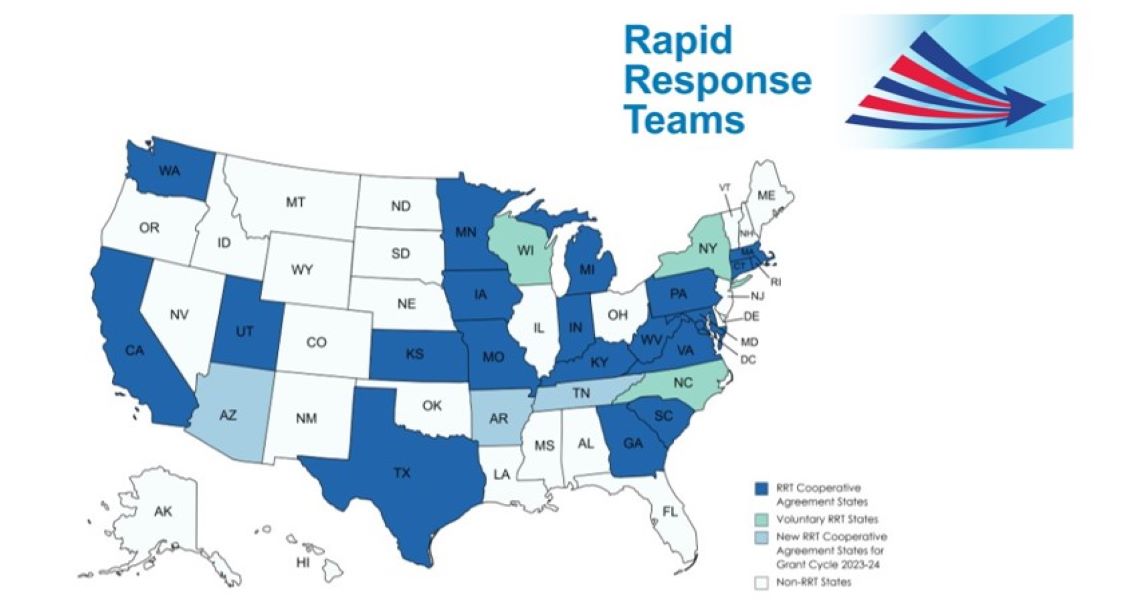What are the Rapid Response Teams (RRTs)?
RRTs are multi-agency, multi-disciplinary teams that operate using Incident Command System (ICS) and National Incident Management System (NIMS) principles and a Unified Command structure to respond to human and animal food emergencies.
What does the Minnesota RRT do?
The desired outcome of RRT development is to minimize the time between notification of a human or animal food contamination event and implementation of effective control measures. To accomplish this, the RRT has processes to:
- Prepare for and effectively respond to foodborne illness outbreaks and other food emergencies.
- Enhance agency collaboration and communication.
- Train staff to be ready to respond to events when they occur.
- Identify preventive practices to reduce foodborne illness and injury.
- Establish national best practices and tools that can be shared with other states to improve their response to food emergencies.
What states currently have RRTs?
- The 23 FDA funded Rapid Response Team cooperative agreement states are: AR, AZ, CA, CT, GA, IA, IN, KS, KY, MA, MD, MI, MN, MO, PA, RI, SC, TN, TX, UT, VA, WA, WV.
- NC, NY, and WI participate in a voluntary, non-funded capacity.

Shopper History
Shopper history is any record that provides information about a specific shopper’s food purchases. Examples include receipts from the grocery store or a screenshot of an online purchase. Shopper history provides an objective source of information for investigations and is an essential tool in solving outbreaks.
The Association of Food and Drug Officials (AFDO) created a video to explain how essential shopper history is in solving foodborne illness outbreaks.
Outbreak Data
On average, the Minnesota RRT is involved in 30 outbreak investigations per year. The majority of these outbreaks are multi-state and include working in partnership with our federal and state partners. The most common pathogens involved in outbreaks in Minnesota for 2024 were Salmonella and norovirus, respectively. A lower number of foodborne outbreaks was observed in 2020, due to the COVID-19 pandemic.
| Year | Investigations |
| 2015 | 37 |
| 2016 | 42 |
| 2017 | 39 |
| 2018 | 42 |
| 2019 | 32 |
| 2020 | 16 |
| 2021 | 21 |
| 2022 | 29 |
| 2023 | 23 |
| 2024 | 27 |

